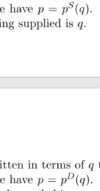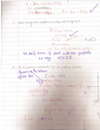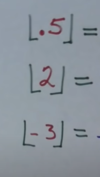Sets and functions Flashcards
(75 cards)
What is a set?
It is a collection of objects or elements
What is the way we write sets in Ma110? use vowels as the example?>
{a,e.i,o,u}
Does order matter in sets, when comparing whether a set is the same or not?
Order does not matter ie { a,e,i,o,u} is the same as {e,i,a,u,o}
Is the set {a,a,i,e,o,u} the same as {a,e,i,o,u}?
Yes repeated elements doesnt matter.
What is the symbol we use to denote its an element of and not an element of? ?

Is a an element of {a,e,i,o,u} is b an element of {a,e,i,o,u}?

Alternatively how can we show whethera an element of {a,e,i,o,u} is b an element of {a,e,i,o,u}?
We name the set A and

What do we call a special set with no elements and how do we denote it?


1) true
2) false
3) false
4) true
5) true
6) true
7) false
8) true
9) true
What do we call, where all the elements of one set are in another set?
A subset is a set whose elements are all members of another set
What is are the symbols of subset and not a subset, ie A is a subset of B and A is not a subset of B?


1) true
2) false
3) false
4) false
5) false
6) true
7) false
8) true
9) true
There is another way of writing sets lets say we have a set
A = {a,b,c,d,e,f,g,h,i,j,k,l,m,n,o,p,q,r,s,t,u,w,x,y,z}?

This means pick all of x ( not the letter x} which is an element of A, such that x is a vowel.
This would be {a,e,i,o,u}
If this holds, what also must hold?



1) = {1,3,5,,7,9}
2) ={1,2,3,4,5}
3) = {1,2,3,4,5,6,6,7,8,9,10}
C and D are a subset of E
We are now going to look at set operations? what are the 4 set operations
Intersection
Union
Complement
Cartiesan products
What does the intersection of 2 sets mean e.g. A and B, whats the symbol and lets say we have 2 sets {a,e,i,o,u} and {a,e}, whats their intersection?
the set of objects that are in both A and B

What does the intersection of A and B mean in terms of subset?


The empty set, they have no elements in common

What does union of 2 sets mean?
Elements in either A or B

What is the U union for the sets
{a,e,i,o,u} U {a,e}
{a,e,i,o,u} U {a,b,c,d,e}
and what does this mean?
1) ={a,e,i,o,u}
2) = {a,b,c,d,e,i,o,u}

What does the complement of 2 sets A and B mean, whats it denoted by?

Everything in A thats not in B its denoted with a forward slash.
= {i,o,u}


What most hold if A forward slash ( complement of) holds?

























































